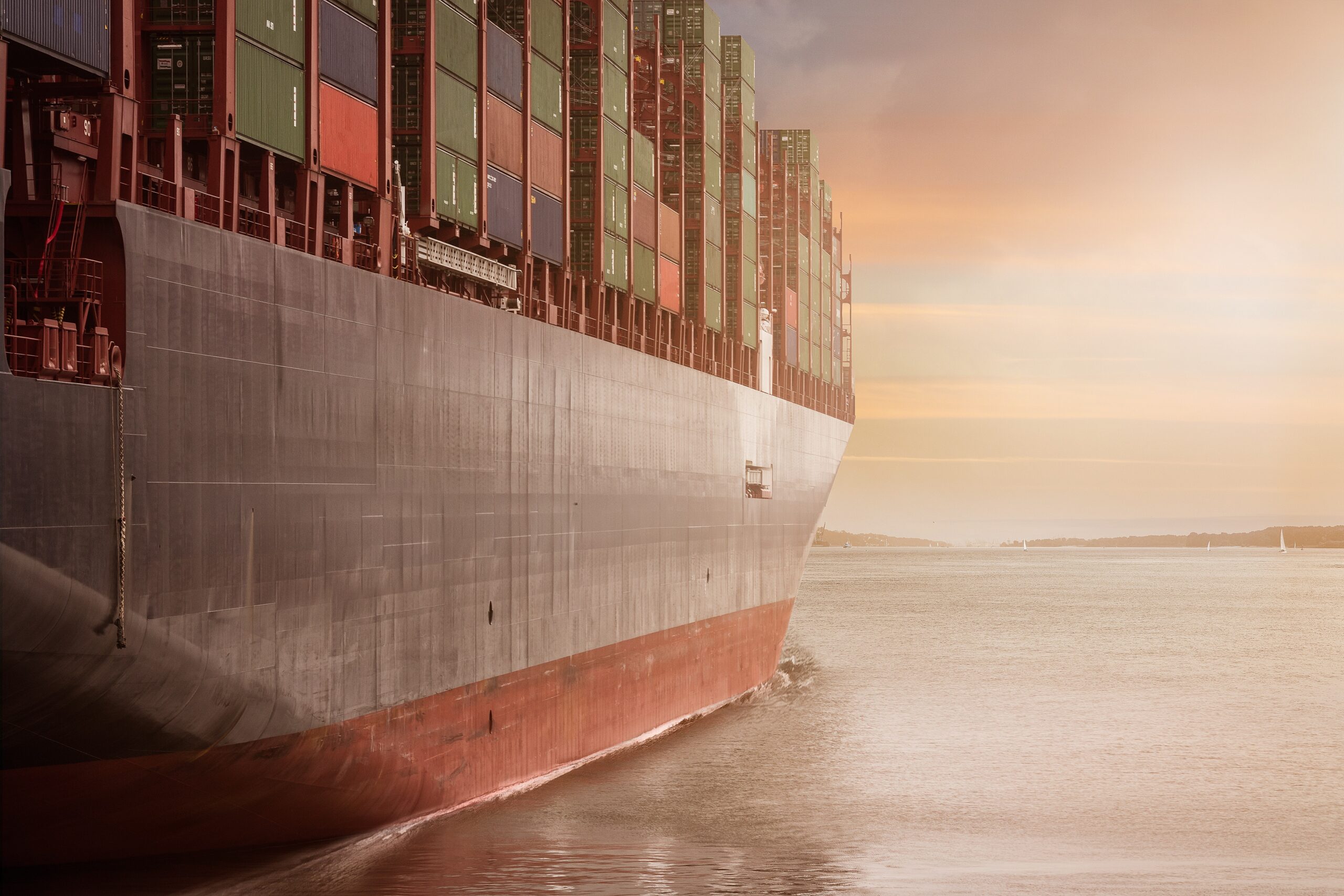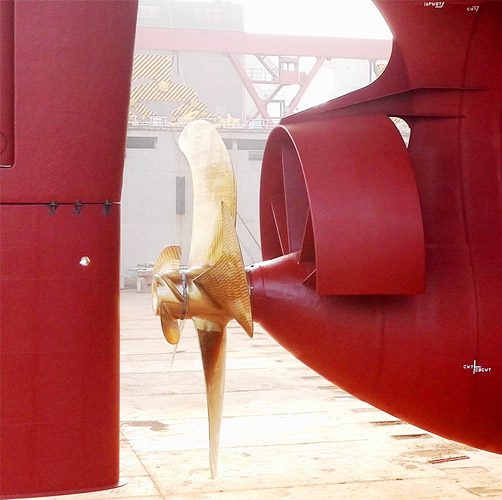28 November 2024
Comply with EEXI & CII in the Upcoming Years

Maritime transport emits around 940 million tonnes of CO2 annually and is responsible for about 2.5% of global greenhouse gas (GHG) emissions (3rd IMO GHG study). According to projections, these emissions will increase significantly if the industry stays unchanged. Hence, the IMO approved a Greenhouse Gas strategy in 2018 which is aiming for the reduction of carbon intensity by 40% until the end of 2030 and by 50% until the end of 2050.
In this regard, IMO will enforce the combination of different technical and operational measures by 2023.
What do we have so far?
Energy Efficiency Design Index for New Ships
During the MEPC 62 (July 2011), IMO adopted the Energy efficiency design index for new ships (EEDI). This measure establishes an energy efficiency identity of all the new-built ships since 2013.
IMO is utilizing a specific formula that estimates the CO2 output per tone-mile. The formula incorporates aspects of the hull, engine, and propeller.
Ship Energy Efficiency Management Plan
Along with EEDI, IMO introduced the Ship energy efficiency management plan (SEMMP). It is the complementary measure that establishes a mechanism to improve the energy efficiency of a ship in a cost-effective manner. Hence, SEEMP includes the enhancement of the ship’s efficiency as mentioned before, the reduction of fuel consumption, and the decrease of GHG emissions from the ship. The four main steps for SEEMP implementation are; Planning-Implementation-Monitoring-Self Evaluation and Improvement.
What to expect in 2023?
Energy Efficiency Design Index for Existing Ships
Similar to EEDI, the Energy efficiency design index for existing ships (EEXI) is the latest technical measure. It indicates the energy efficiency/emissions performance of the ship and applies to all vessels above 400GT that fall under MARPOL Annex VI.
Even though complying with the EEXI is not a hard task, there are several actions to take. So, don’t waste time!
Carbon Intensity Index
The operational measure accompanying EEXI is the Carbon Intensity Index (CII), which measures the transport efficiency of vessels. To clarify, it will be applicable to all cargo, RoPax, and cruise ships above 5,000 GT. Moreover, the estimation of this index incorporates the annual ship’s fuel consumption, the distance traveled, and the capacity. Hence, CII results in emitted CO2 per cargo carrying capacity for the annual traveled distance.
Based on the result, the vessel will have a rating between A-E.
Ships in category E will have to take more or less immediate measures while ships in category D to improve within 3 years.
Thus, the non-compliant vessels must develop a “Plan of Corrective Actions”, which they should include in the SEEMP.


Even if EEXI/EEDI is met, CII ratings may not be satisfactory.
Calculation of EEXI, CII & Challenges
-EEXI
Is EEXI calculation easy and applicable for all vessels?
The truth is no! EEXI regulation concerns existing ships and issues are arising when collecting the required data. Moreover, each ship type has different factors to consider (the strictest requirements for bulk carriers for example).
For the calculation of EEXI, it is necessary to determine the reference speed (Vref) at a certain draft of the vessel.
On the contrary, it is unlikely that many existing vessels subject to the EEXI, have compliant model tests or sea trials at the required draft. In that case, the guidelines offer the option to calculate Vref using an approximate formula. But, this approximation will result in a slower speed than the vessel could achieve.
Owners can improve the EEXI rating by determining the Vref from model tests. However, building a new model to scale and conducting towing tank tests is unreasonably expensive and time-consuming.
Alternatively, Computational Fluid Dynamics (CFD), is faster, cheaper, and provides results at the same level of reliability to model tests. Additionally, it assesses accurately the impact of additional energy efficiency technologies on the Vref.
So, what if the EEXI calculation does not meet the requirements?
Then there are available modifications in order to meet the requirements. This will be mostly dependent on the owner, where they will have several options to exercise for the improvement of EEXI.
-CII
Nevertheless, CII calculation is a more straightforward method as seen before. However, complexity stands up when it comes to newbuilds. In this case, owners have to predict and minimize the CII value as much as possible.
The energy modeling of the vessel will allow the simulation specific to the particular operating profile. These models also account for potential environmental conditions a vessel may come across while at sea. Hence, allowing the shipowner to achieve a better rating. However, the CII value will still not be completely accurate but for sure will bring us a step closer to the desired results.
How to comply with the regulations, so far
-Power Limitation
It is almost certain that most shipowners will seek to comply with EEXI by adopting either engine power limitation (EPL) or shaft power limitation (SPL). Potentially, SPL will be the preferred choice for multi-engine setups. However, power limitation has a negative impact on speed which can result in economic performance issues.
Therefore, speed reduction is a valid option for vessels with high design speed and high installed power like container vessels. On the contrary, tankers and bulkers will have limited benefits in terms of commercial flexibility and attractiveness to charterers. This is due to the lower design speeds.
For instance, a bulk carrier is acceptable with a speed reduction of 5% by EPL when considering the average vessel speed. But, it will impact around 15% of the vessel’s sailing days over a 12-month period. This will be due to the need to sail at higher speeds. Nonetheless, EPL and SPL do not impact a vessel’s carbon footprint. As a result, they provide no benefit in terms of the vessel’s CII rating.
So, what are the alternatives and how can shipowners improve their EEXI without reducing sailing speeds?
-Energy Saving Devices (ESD)
ESDs provide a direct increase in vessel propulsion efficiency by reducing hull resistance and improving propeller thrust. In particular, they comprise devices applicable before or after the propeller while also high-performance hull coatings to reduce resistance.
- In front of Propeller – Redirection of flow to increase propeller efficiency.
Pre-Swirl Stator (PSS) | ≈ 4%
Wake Improving Duct (WID) | 3 – 7%
Pre-Shrouded Vanes (PSV) | 3 – 8%
- Behind Propeller – Vortex elimination.
Hub Vortex Absorbed Fins (HVAF) | 2 – 5%
Bulb and fins on Rudder | 3 – 5%
Post-Stator Fins (PSF) | 2 – 3%

Additionally, the installation of a high-efficiency propeller based on the vessel’s current operational profile also offers significant potential benefits. Energy savings vary between 5–10% when combining ESDs and a high-efficiency propeller.
Nonetheless, since newbuilt vessels will have ESDs, there will be room for Energy Efficient Technologies in the market.
-Energy Efficient Technologies (EET)
Instead of small additional devices, shipowners are considering retrofitting revolutionary and innovative concepts at a higher cost.
Air lubrication system to reduce frictional resistance. Frictional resistance is the dominant feature of slow-speed vessels. Hence, by creating a flowing layer of air bubbles under the hull, the wetted surface area of the ship decreases. As a result, the frictional resistance will decrease as well as fuel and GHG emissions by up to 10%.
Alternatively, vessel operators may plan to install renewable energy solutions such as the harnessing of wind.
Wind propulsion is an upcoming concept that has already been implemented on some vessels but not to a high extent. It still requires time for people to trust it.
But is that really the case? DNV has awarded approval in principle to BAR Technologies for their wind wing propulsion technology. This technology approximately offers up to 30% average fuel reduction, which must sound attractive to everyone!
Moreover, wind rotor sails can offer a high percentage of fuel consumption reduction. For instance, the hybrid ferry M/V Copenhagen has already retrofitted rotors in 2020, while her owners ordered more. It looks like there is a future on it.
These solutions can lead to a vast amount of annual fuel savings. In reality, they will not reduce the carbon emissions/ kg of fuel but will reduce the carbon emissions/ nautical mile.
-Carbon emissions reduction device
Particularly for CII, the concept of Carbon Capture Storage Devices may significantly improve the rating of the vessel. Since the vessel will have fewer carbon emissions emitted per year, the vessel will have a fine CII rating. However, the retrofit installation of the system comes at a cost, like the EETs.
-Alternative fuels
Despite the potential and hopes that future fuels promise, the path ahead is littered with uncertainties.
LNG is both an established reality in the new-build market and an excellent option for retrofits. Due to the fact that it instantly and drastically reduces CO2, NOx, SOx, and particulate emissions. Already applied in every vessel segment, with mature legislation frameworks and robust bunkering infrastructure.
Methanol is currently an attractive alternative fuel for newbuilds and retrofits due to its physical properties. Additionally, using hydrogen from renewable electricity and recaptured carbon to make green methanol would provide carbon neutrality.
Therefore, there are various cases to consider such as the crew transfer vessel with converted engines to run on methanol.
Nonetheless, ammonia and hydrogen represent the fully carbon-free fuels of the future. These fuels gain interest from establishments like the World’s First Ammonia Conversion Project and the World’s First Hydrogen Powered Vessel. Moreover, the latest innovation is the Hydrogen Fuel Solution from Wärtsilä to Meet IMO 2050 Target.
Sustainable fuels can have a vast positive impact on a vessel’s EEXI and CII rating. However, their implementation requires noticeable investment in both bunkering infrastructure and onboard fuel storage and handling systems.
Thoughts from the Nerd
The list of possible solutions is endless and this article is already large enough. But, the above is a well-built representation of the current and potential situation of the shipping industry.
One thing is most certain, regulations can only get more strict and challenging for shipowners. Therefore, the Nerd suggests investing in long-term, sustainable and flexible solutions in order to achieve freedom from compliance.
References:
- https://www.lr.org/en/eexi-energy-efficiency-existing-ship-index/
- https://www.dnv.com/maritime/insights/topics/eexi/index.html
- https://www.imo.org/en/OurWork/Environment/Pages/Technical-and-Operational-Measures.aspx
- https://ww2.eagle.org/content/dam/eagle/advisories-and-debriefs/ABS_Energy_Efficiency_Advisory.pdf
- https://theicct.org/sites/default/files/publications/Limiting_engine_power_02112020_0.pdf
- https://www.wartsila.com/marine/maintain/lifecycle-upgrades/power-limitation-solutions


